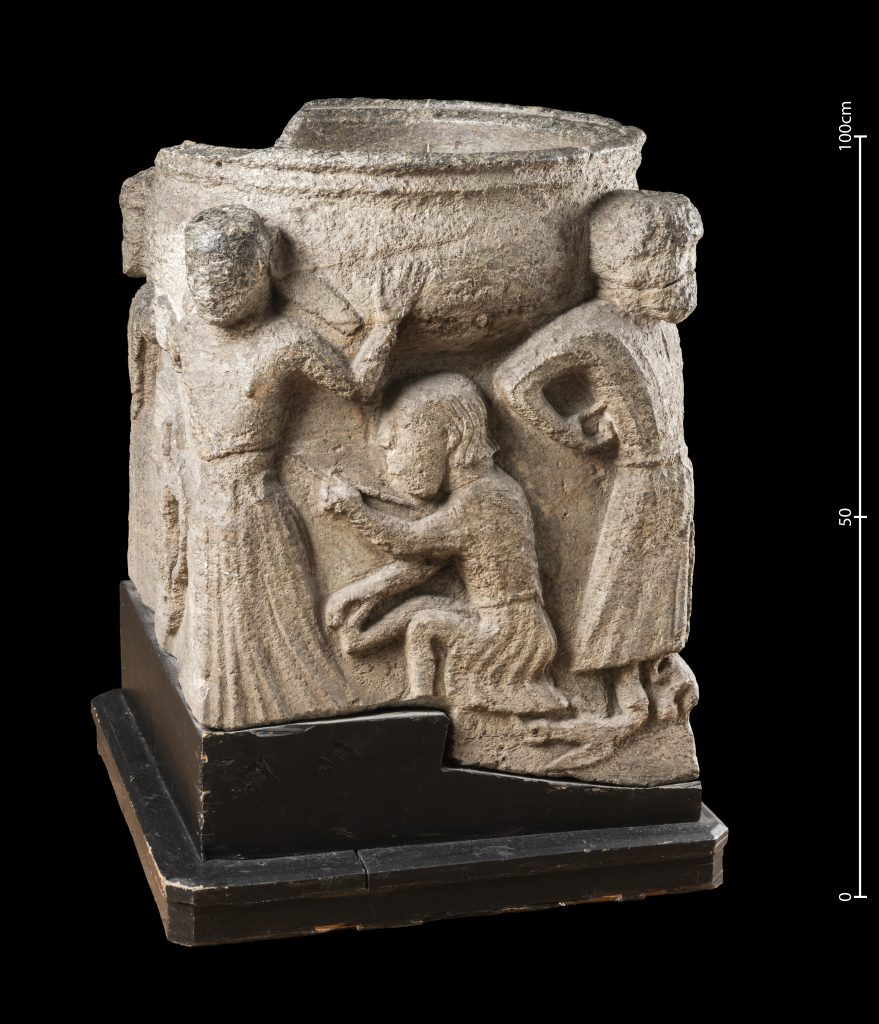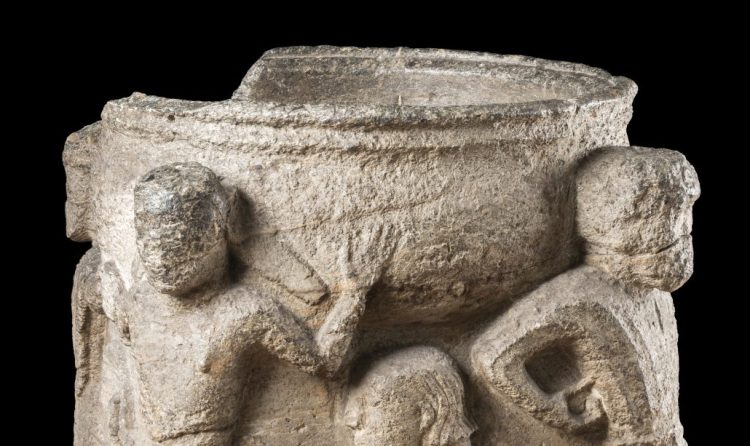This thirteenth-century font from Os has a remarkable shape and a rich iconography. The circular basin with a profiled rim is surrounded by four supporting corner figures that create a transition to the square base. The rather coarsely carved figures represent two bearded men, a bishop with a mitre and crozier and a woman with her breasts exposed. They hold their arms stretched out, forming a wreath around the basin. The woman’s hair carries a runic inscription that has been read as ákalit (‘invocation’). Together, the bishop and the woman hold a book inscribed with several letters, possibly A B B A (‘father’).

Between the two men, and between one of these men and the bishop, are jumping lions. The third side shows a sitting man who grabs his foot with one hand and holds a stick in the other, probably a thorn-puller (spinario), a symbol of victory over evil. The fourth side features a quatrefoil with a crowned Christ in a cruciform posture but without a cross. Under the feet of the two bearded men are snakes and a toad-like creature; the opposite side of the base is damaged.

Bendix Bendixen’s interpretation of the community (the men and the woman) and the clergy (the bishop) who gather around the Baptismal font to vanquish evil in the shape of the trampled animals, seems convincing. The lions may symbolize Christ (as the Lion of Judah) whose death on the cross, which is also shown, brings Salvation. However, the fact that one of the animals has its mouth open might express the opposite, the threat of evil and death. Mona Bramer Solhaug interprets the half-naked woman as a personification of adultery (luxuria). She mentions several fonts following similar models with circular basins supported by four corner figures in countries surrounding the North Sea and further south, in French Brittany. The use of local soapstone, however, leads her to conclude that this example was produced in Norway, possibly by a foreign stone carver.
Norway, 1225-1250
From Os south of Bergen, in the museum since 1825
Soapstone
H 91 x W 67 cm
Inv. no. MA 37
